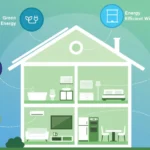Marine construction includes anything built along the water and must withstand the harsh marine environment. This type of construction allows for the development of otherwise inaccessible areas and can help stimulate growth in coastal and waterfront communities.
Despite the challenges, this industry is vital to our daily lives. Learn more about this fascinating field and the specialized skills and expertise required.
Materials
Marine construction involves building structures in or around bodies of water. These structures can be used for various purposes, from transporting goods to providing energy.
The most common marine construction materials are concrete, steel, and timber. They are designed to withstand the stresses and forces of the ocean, including currents, waves, and wind.
Another essential material for Florida marine construction is cement. This is a green-grey powder that sets hard with the addition of water. It can be used to make concrete but is often used in foundations and pilings. For marine work, sulphate-resistant cement (SRC) is recommended.
Other common marine construction materials include steel, rebar, and wood. The type of material used depends on the particular project. For example, some projects require ductile metals that can be deformed before they break. Other projects require wood with a high tensile strength. These materials can be molded into structural units offsite and assembled on the water, reducing construction costs and duration.
Strength
Unlike land-based construction, marine projects face unique environmental and regulatory challenges. Marine construction also requires different materials for durability, as structures are often subjected to harsh marine environments.
Despite these challenges, marine construction offers several advantages. It can help access inaccessible areas and stimulate growth in coastal and waterfront communities. Additionally, it can be used to build more environmentally sustainable infrastructure by using less land space.
As a result, the marine construction industry is increasing. Understanding the engineering principles involved in this type of construction is essential to ensure projects run smoothly. This includes understanding lateral and horizontal forces on the structure and corrosive effects of water. It is also necessary to consider the possibility of seismic activity. In addition, technological advancements are impacting the marine construction industry, such as digital solutions that facilitate collaboration throughout different stages of a project.
Welding
Marine construction requires specialized welding techniques to build structures that can withstand the extreme forces of wind and water. This type of construction is also more difficult because it takes place in an environment that is constantly changing. Marine structures are also subject to several unique environmental factors, including corrosion from saltwater and the possibility of seismic activity.
Fortunately, several technological advancements are helping to make marine construction safer and more efficient. For example, digital solutions allow clients to give real-time design feedback before they begin the physical construction process. This helps to reduce risks and ensure that all parties are satisfied with the result.
Additionally, using drones and autonomous robots allows faster and more accurate surveys to be conducted underwater. This will reduce manual survey time and increase design accuracy.
Design
Several factors make marine construction unique from building on land. This includes various laws and regulations and a range of specific safety issues.
Another factor is the weather, which can change rapidly and present a risk to workers. It also requires adhering to strict environmental regulations.
Fortunately, technological advancements are making marine construction faster and more efficient. This is particularly true for projects that involve underwater construction. Robotic vessels, such as autonomous underwater robots and drones, can reduce the risk of human error and provide faster, more accurate data. Modular construction is also helping to speed up the process by allowing contractors to build components offsite and then assemble them on-site.










